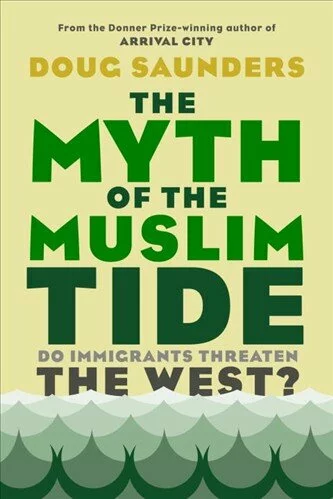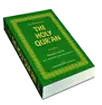 Doug Saunders may be on his way to becoming the most important journalist in the Canadian mainstream media.
Doug Saunders may be on his way to becoming the most important journalist in the Canadian mainstream media.
As the European bureau chief of the Globe and Mail, Saunders has exhibited a keen interest in the history of immigration and the integration of different cultures in cities.
His last book, Arrival City: The Final Migration and Our Next World, was a brilliant examination of the mass migration of people from rural to urban areas, both within countries and across international boundaries.
He pointed out how poor city planning can hamper the integration process, becoming the catalyst for political unrest, riots, and even revolutions.
His new book, The Myth of the Muslim Tide: Do Immigrants Threaten the West (Knopf Canada), takes on another weighty subject: whether western countries are being overrun by Muslim migrants who pose some sort of threat to democracy and free societies.
This notion is peddled by European political parties, prominent Republicans including Newt Gingrich, FOX News commentators, and numerous authors, including Canadian right winger Mark Steyn.
In a cool-headed manner, Saunders dismantles their claims one at a time with a relentless onslaught of facts.
In The Myth of the Muslim Tide, he cites numerous poll results showing that Muslim immigrants are often significantly more patriotic than non-Muslims, and are increasingly tolerant of homosexuality and supportive of women working outside of the home.
“In general, while their values still lag behind those of their non-immigrant neighbours, and that discrepancy is the source of considerable tension, immigrants of Muslim origin are very clearly progressing toward integration at a rapid pace—especially when you consider that the largest group of these immigrants has arrived in the last 20 years,” Saunders writes. “Moreover, it took European and North Americans decades to build the beginnings of legal and social consensus behind women’s rights, homosexual equality and birth control. Muslim immigrants, coming from a far lower level of economic development, appear to be adopting those views much more rapidly.”
He notes that 63 percent of American Muslims see no conflict between being a devout follower of their faith and living in a modern society. Among U.S. Christians, 64 percent shared this view. A higher percentage of Christian Americans self-identify as Christians first as opposed to Americans first when compared with how U.S. Muslims identify themselves.
Saunders also demolishes the widely held notion that Muslims have extremely high birth rates in the West, which will lead them to becoming a majority in countries like France and Germany.
In addition, Saunders seriously scrutinizes Steyn’s claim that Islam, unlike other faiths, “is a political project” and “a bloodthirsty faith”.
The author proceeds to dismantle this with evidence from the British intelligence agency MI5, showing that it’s generally not devout Muslims who become terrorists. In fact, these violent extremists are often well-educated “religious novices” drawn to peer groups for personal reasons.
He reports that a study of convicted terrorists in Britain and Canada showed that religious radicals “felt genuine affection for Western values of tolerance and pluralism”; terrorists, on the other hand, “were unique in their loathing of Western society and culture”. Moreover, “their degree of interest in the actual teachings of the Koran was fairly minimal.”
In many respects, Saunders shows that the types of people attracted to jihadist organizations have much in common with young, violent left-wing extremists who, in bygone days, joined the Baader-Meinhof Gang in Germany, the Japanese Red Army, and the Weather Underground in the United States.
At times, Saunders’s book reads like a doctoral dissertation as he bludgeons readers with data. But in light of all the hype about the so-called Muslim threat, it’s a prudent approach because it makes Muslim-tide authors like Steyn, Bruce Bawer, Melanie Phillips, and Christopher Caldwell look like buffoons.
Anders Breivik’s influences studied
Unlike almost every other Canadian journalist, Saunders also took the time to read the 1,518-page manifesto by Norwegian mass murder Anders Breivik. Last summer, he bombed a government building and coldly hunted down dozens of children on the island of Utoya while dressed as a police officer.
It was a crime spree of breathtaking cruelty, with 77 dead by the end of it all.
Saunders reveals that Breivik’s book, 2083: A European Declaration of Independence, cited several of the Muslim-tide authors who are treated with such credibility by right-wing media outlets like the Wall Street Journal, FOX News, and Maclean’s magazine.
“He did not develop a new argument at all, but merely cut and pasted theirs, unaltered, and appended his own violent conclusion,” Saunders writes.
Breivik claimed to go on his murderous rampage to stop the enablers of “Eurabia”, Saunders states, with the goal being to halt a “Muslim onslaught”.
Many readers of The Myth of the Muslim Tide will be left wondering if Breivik would have developed these hateful views had the media presented a more accurate picture of Muslims in the West.
Distinctions lacking
The Saunders book isn’t without some drawbacks. There is not enough education for nonbelievers about the different sects of Islam or how the national origins of Muslim immigrants might be influencing their acclimatization to the West.
In Canada, the Ismaili Muslims, for instance, have been a model immigrant community with an extremely progressive view of the rights of women. Saunders notes that in Britain, the Muslim population tends to be more conservative than in other European countries, but there isn’t sufficient exploration about the role that the Saudis might be playing in spreading their repressive Wahhabi faith in that country.
Saunders also doesn’t address the arguments of Canadian writer Tarek Fatah, whose 2010 book The Jew Is Not My Enemy shows how the Koran has been twisted by jihadists to justify intense anti-Semitism. Fatah has also maintained that a great deal of “Islamic” extremism in the West originates in Pakistan.
However, Saunders makes a good case that state power and political rhetoric are being targeted at Muslims generally in the United States, whereas in the past, elected officials used to highlight “good Muslims” and “bad Muslims”. And that, Saunders suggests, is a dangerous trend.
In this regard, he likens the current environment to previous attacks by politicians and writers on waves of Catholic and Jewish immigration to western countries.
“We see it over and over again when a new group of immigrants arrives who are members of a religious minority, usually poor and ill-accustomed to the language and folkways of their new country and the workings of its economy,” Saunders writes. “In response to public alarm at these strange newcomers, writers and politicians offer the same set of frightened, frightening ideas. They are different from previous groups. They do not want to integrate. Their religion compels them to impose their values on us. Their reproduction rates will swamp us. They are disloyal and capable of violence.”
Bashing Muslims has become a veritable industry, Saunders reveals, thanks to millions of dollars in funding from conservative foundations to the bloggers who led Breivik to believe a Muslim majority was in Europe’s future.
SOURCE: straight.com
No comments yet.

















